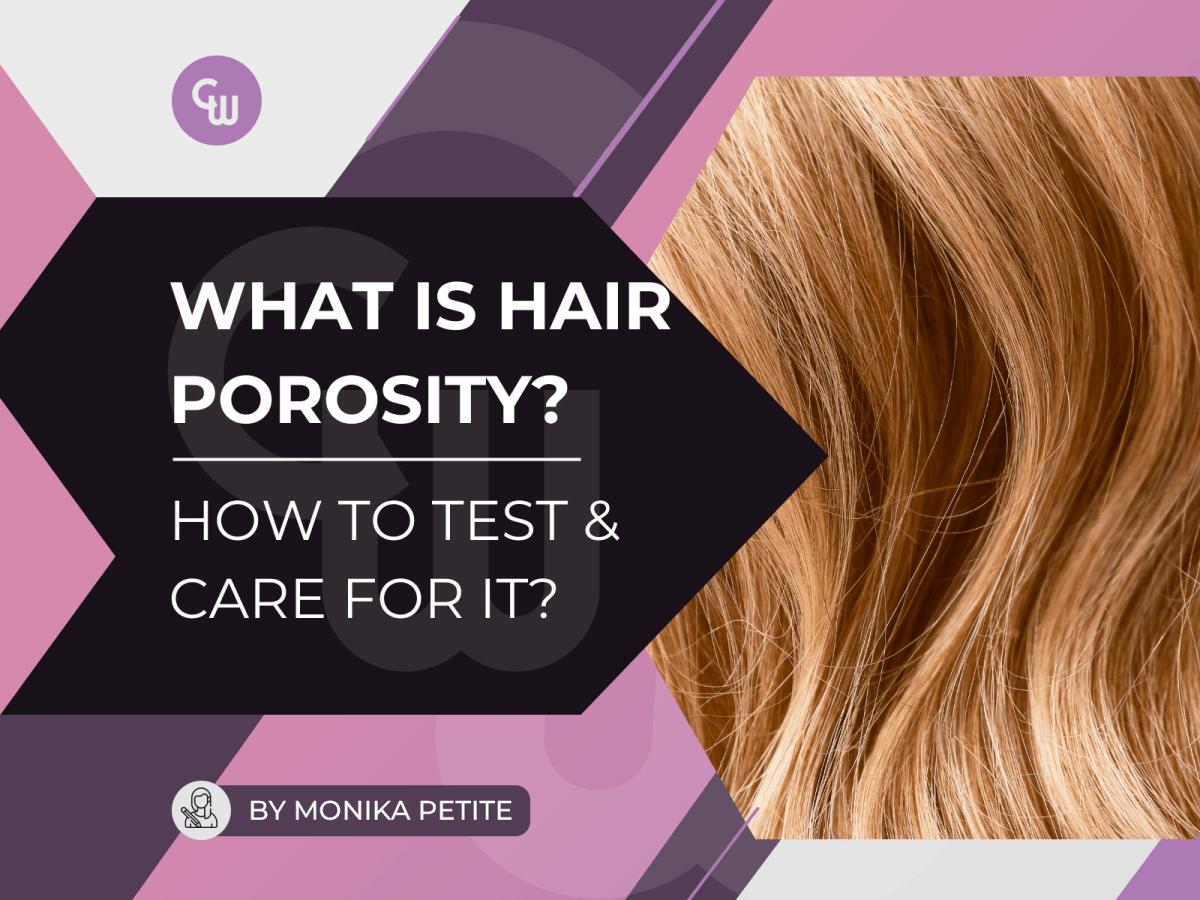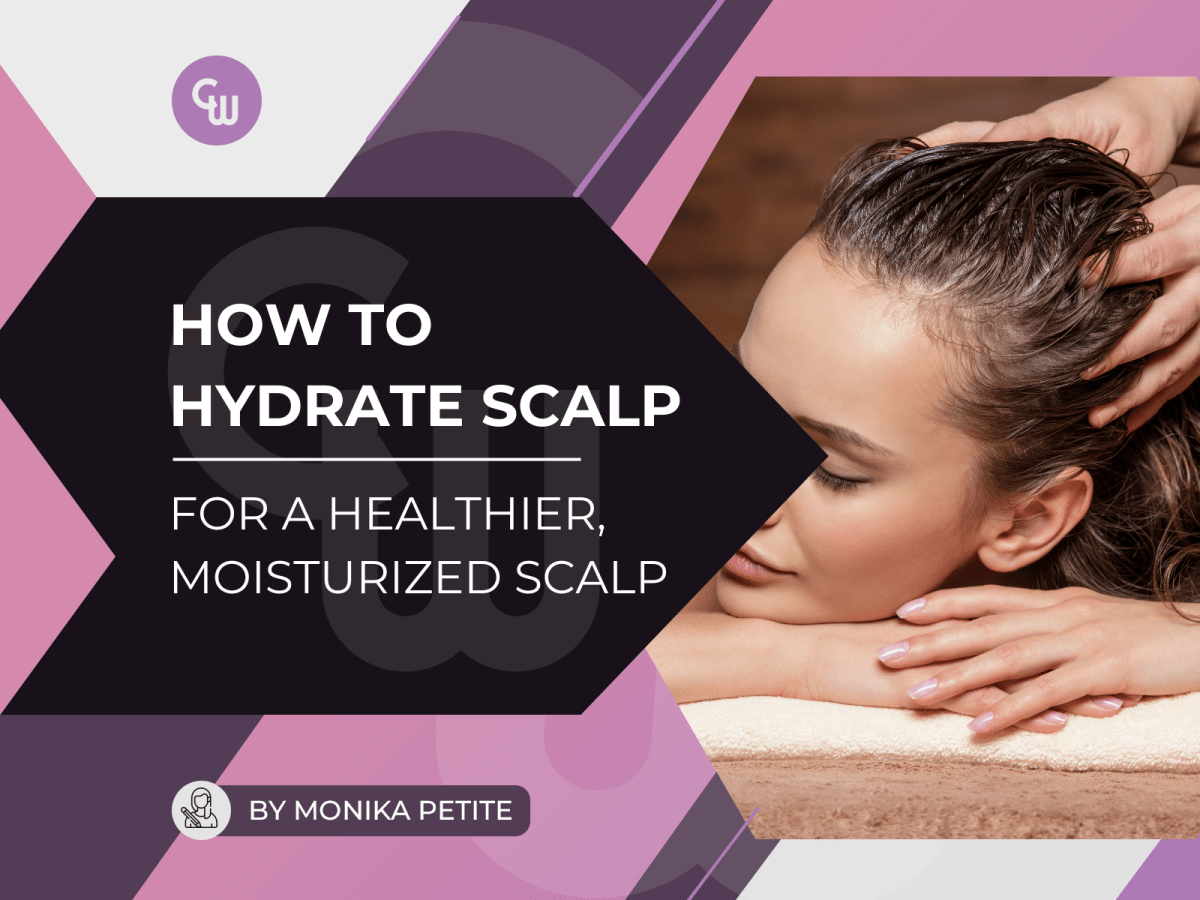Inside this Article
Understanding Hair Porosity

Hair porosity is all about how your hair absorbs and holds moisture 💧. Think of it as your hair's ability to absorb and keep the good stuff. It's determined by the number and size of tiny openings in the hair shaft—and it's more important than you might think! Knowing your hair's porosity can really shape how you care for it and which moisturizing products will work best for you. 🌟
There are three main types of hair porosity:
-
Low porosity hair is like that friend who just doesn't let anyone in—it resists moisture, making it a bit tricky to keep your hair strands hydrated. 🚫💧
-
Medium porosity hair (a.k.a. normal porosity hair) is the Goldilocks—it lets moisture in and holds onto it well. This is the "balanced" type most of us are aiming for. ⚖️
-
High porosity hair is a bit of a drama queen—it soaks up moisture fast but loses it just as quickly, often leading to dryness and frizz 😣💨.
Once you know your hair porosity level, it's way easier to find the right hair products and routines that actually work for you. It's not just science—it's super practical! 💡✨
The Role of Hair Cuticles
Your hair’s outermost layer, known as the cuticle, is super important when it comes to porosity. Imagine these cuticles as tiny shingles on a roof 🏠—how they lie down impacts how well your hair can retain moisture 🌊.
-
For low porosity hair, the cuticles are packed in tight, making it tough for moisture and hair products to sneak in. This can lead to product build-up and that heavy, dull vibe we all dread 😩.
-
On the flip side, high porosity hair has gaps and holes in the cuticle layer, letting moisture in—but also letting it escape way too quickly. That's why this hair type is more prone to frizz and damage 🌪️.
Things like heat styling tools 🔥, soaking up the sun ☀️, and chemical treatments 💇♀️ can wear down your cuticles over time, cranking up your hair’s porosity level. So, keeping your cuticle layer in check is key if you want healthy hair that’s strong and hydrated 💪💧.
What Affects Your Hair Porosity?
While genetics plays a big role in your hair's natural porosity, many factors can mess with it too. For instance, the texture of your hair—whether it's straight or curly—can make a difference. Curly hair tends to have higher porosity because of its structure, meaning it can lose moisture more easily. 🌊
Then there are the external factors: chemical processes (like bleaching or relaxing), frequent heat styling, UV rays, and even pollution can all boost your hair's porosity by messing with the hair cuticle 🌬️. 💇♀️☀️
Types of Hair Porosity

Hair porosity breaks down into three main vibes: low, medium, and high. Each type has its own quirks when it comes to absorbing and retaining moisture—and figuring out your hair's ability can help you nail down a care routine that works.🧴✨
Low Porosity Hair
Low porosity hair is a bit of a tough nut to crack—the hair cuticles are packed super tight, making it hard for moisture to penetrate. Ever notice water just chilling on your hair instead of soaking in, especially when you air dry? That's a classic sign, especially if you've tried the spray test.
The upside? This hair type is pretty chill when it comes to environmental damage, thanks to that solid cuticle barrier. But getting it to stay hydrated? Now, that's a whole other story. You'll probably need lightweight, non-gunky products and maybe a bit of warmth (like a steamer or warm towel) to help open those cuticles and let the good stuff in. 🔥🧖♀️
Medium Porosity Hair
Medium porosity—aka the “sweet spot”—is kind of like the Goldilocks. The hair cuticles are just open enough, so it can drink up and retain moisture without breaking a sweat. It’s usually easy to style, holds color like a champ, and just looks all-around healthy and bouncy. 💁♀️
If your hair falls into this category, congrats! Just keep it in good shape with regular moisturizing and gentle, sulfate-free shampoos. Medium porosity hair is pretty chill and gets along with most products and techniques, making it super easy to manage. 🧼💆♀️
High Porosity Hair
High porosity hair is a bit of a moisture sponge—it soaks up water fast, but the catch is, it loses it just as quickly. That's because high porosity hair has a cuticle layer with more gaps or holes, which can happen naturally or from things like bleaching, heat styling, or chemical treatments.
This hair type tends to feel dry and frizzy and is more prone to breakage. But don’t sweat it—there are ways to take care of it, including using anti-humectants! Highly porous hair usually thrives with frequent deep conditioning, hydrating leave-ins, and protein-rich products to help strengthen and seal the cuticle. It's also smart to cut back on heat styling and use protective styles or products to lock in moisture. 💧💪
What Causes High or Low Hair Porosity?

Hair porosity isn’t just some random thing—both genetics and environmental factors shape it 🌿🔥.
So, let’s break it down:
-
Genetics
Your natural hair structure often runs in the family. So, you might have the same hair porosity type as your folks. For instance, curly hair tends to be more porous because of its shape and how easily moisture can escape from those curls. 💫
-
Environmental and Chemical Damage
Porosity can change over time based on how you treat your hair. Exposure to things like:
-
Chemical treatments (like relaxing, perming, or coloring) 🎨
-
Heat styling (flat irons, blow drying) 🔥
-
Sun damage or UV rays 🌞
…can all mess with the hair cuticle layer, creating tiny gaps and leading to high porosity. Bleaching and other chemical processes are especially notorious for opening up the cuticle scales, making hair more porous and prone to dryness and breakage over time. ⚠️
-
Low Porosity Factors
On the flip side, low porosity hair usually comes from having naturally compact cuticle scales that don’t let moisture in easily. This is mostly genetic, and while it offers protection from environmental damage, it can also make it tricky for moisture to penetrate the hair shaft. 🚫💧
Knowing your hair's ability to absorb can help you make better choices—whether that means switching up your shampoos and conditioners or taking a break from heat and chemical processes. 💡✨
How to Test Your Hair Porosity

Figuring out your hair porosity helps you pick the right moisturizing products and routines for healthy hair. And the best part? You can easily test your hair at home with a couple of simple methods: the float test and the spray test. 🧪💧
-
The Float Test
This one's probably the most popular strand test out there. Here's how you do it:
-
Grab a clean hair strand (make sure there's no product build-up on it—clean slate, ya know?).
-
Drop it into a glass of room-temperature water. 🥤
-
Watch what goes down. 👀
If the hair floats for ages and sinks slowly, you’re likely rocking low porosity. Those cuticles are super tight, so water doesn’t penetrate the hair easily. 🚫💧
If it sinks like a rock → you're looking at high porosity hair, meaning your hair soaks up moisture fast—but it also lets it go just as quickly. 🌊
⚠️ Heads up: this method isn’t foolproof. Product residue or even humid weather can mess with your results. 🌦️
-
The Spray Test
Another quick and easy test:
-
Take a small section of dry hair. ✂️
-
Give it a light spritz with water. 💦
-
See what happens next. 🤔
If the water beads up and just chills on top, you’re probably dealing with low porosity. 💧
If it’s absorbed right away, your hair is likely high porosity. 🚀
This test is a cool way to see how your hair reacts to moisture in real-time. Based on what you find out, you can start picking better products, like light oils for low porosity or protein treatments for high porosity, and build a hair care routine that works for you. 🌿✨
Caring for Different Hair Porosity Types

When it comes to keeping your hair health fab, knowing your hair's porosity is a total game-changer. Each porosity type has its quirks, and tweaking your routine to match can seriously up your hair—whether you're battling dryness, frizz, or that annoying product buildup. 💇♀️✨
Low Porosity Hair
Low porosity hair can be a diva—it’s like, "No thanks, I’m good" when it comes to moisture because the cuticles are packed super tight. This can lead to product buildup and that dull vibe nobody wants. 🚫💧
Here’s how I handle it:
-
Crank up the heat when deep conditioning (think a warm towel or a steamer) to help open up those cuticles and let the moisture penetrate the hair shaft. 🔥🧖♀️
-
Lightweight hair oils like argan or jojoba are my go-to—they nourish without weighing my hair down. 🌿
-
I make sure to clarify regularly to remove build-up and make room for all the good stuff. 🧼
-
Staying consistent with moisturizing and deep conditioning keeps my hair soft and shiny. 💧✨
Getting low porosity hair to play nice can be a bit of a hustle, but with the right moves, it thrives! 🌱
Medium Porosity Hair
If you’ve got medium porosity hair, you’re basically living the dream! This hair type is all about balance—it absorbs moisture and holds onto it like a pro, with zero drama. ⚖️
To keep it in check:
-
I stick to sulfate-free shampoos to keep those natural oils intact. 🚿
-
Moisturizing regularly is key to keeping everything balanced. 💦
-
I never skip out on routine conditioning—it’s the secret to keeping my hair elastic and soft. 💁♀️
Medium porosity hair is super chill and gets along with most products. Lucky! 😊
High Porosity Hair
High porosity hair is like a sponge—it soaks up moisture fast, but it’s out the door just as quickly. It’s often a bit high-maintenance with dryness, frizz, and damage if I’m not careful. 🌊😣
Here’s what to do:
-
Moisturizing often and using deep conditioning masks weekly to lock in that hydration. 🧴💧
-
Protein treatments are a must—they beef up hair strands and cut down on breakage. 💪
-
Dodge heat and harsh chemicals whenever you can, and always protect your hair from sun, wind, and pollution. ☀️🌬️
High porosity hair might need a bit more love, but with the right routine, it can be super soft, strong, and totally on point. 🌸
Get a Professional Hair Porosity Assessment

Doing the DIY tests like the float or spray test is a solid start—but if you really want to get the nitty-gritty, nothing beats a pro's take on it.
Why go for the pro route?
-
Way more precise results than the home tests🔬
-
Custom care tips that you can put to use📋
-
Healthier, more vibrant hair with a routine that’s on point✨
If you’re stuck trying to figure out your porosity—or if your current hair routine just isn’t cutting it—a pro assessment could change that for you.
Summary
Understanding your hair’s porosity is like unlocking the secret to healthy, manageable hair! Once you determine your hair type—be it low, medium, or high porosity—you can tailor your routine to keep it hydrated and protected. This knowledge helps you avoid hair damage like dryness, frizz, and breakage while choosing the best hair styling products. Embracing your unique porosity level allows you to make informed choices, keeping your hair healthy and vibrant.
Frequently Asked Questions
What is hair porosity?
Hair porosity is how well your hair absorbs and retains moisture, depending on the size of gaps in the hair shaft. Knowing your porosity helps you pick the right products for healthy, hydrated hair.
How can I test my hair porosity at home?
You can try the float test by placing a strand of hair in water to see if it sinks or floats. Alternatively, the spray test shows how quickly your hair absorbs water when sprayed. Both tests give you a good idea of your hair's porosity.
What are the characteristics of low porosity hair?
Low porosity hair has tightly packed cuticles, making it hard for moisture and products to penetrate. This can lead to product buildup and difficulty in keeping the hair hydrated.
How can I care for high porosity hair?
Moisturize frequently and use protein-rich products to prevent dryness and strengthen the hair. Avoid harsh chemicals and protect your hair from environmental damage to keep it healthy.
Why should I seek a professional hair porosity assessment?
A professional assessment provides accurate results and personalized care tips, ensuring your hair care routine is tailored to your specific needs for optimal results.





